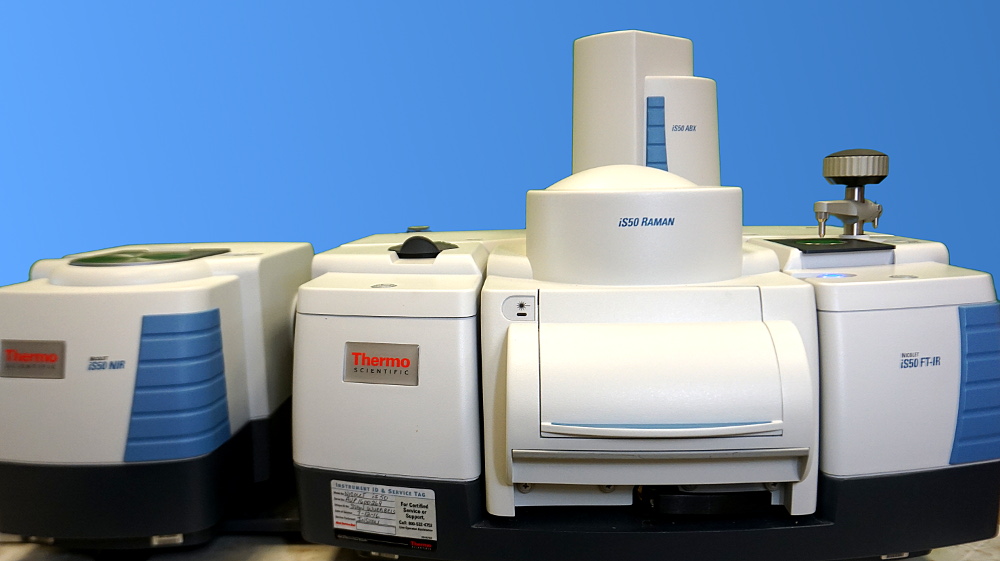FTIR System
Nicolet iS50 FT-IR analysis spectrometer: Our Nicolet iS50 is the center piece of our laboratory, as our primary analytical method. This is a cutting edge, top of the line system used in the identification of polymers, rubbers, pharmaceuticals, forensics or any other materials. We are able to identify foreign materials with ease, as well as determine if two materials are identical. With Several analytical methods available, we have the capability for a wide range of analyses.
The built in ATR allows analysis for powders, liquids, gels and pastes, polymers, rubbers, pharmaceuticals, forensics or any other foreign material.
The integrated RAMAN Infrared is a non-contact analysis system for material identification. Compatible materials for the RAMAN analysis include solid materials such as crystals, minerals and sulfur; pharmaceutical tablets; powders, granules and pellets; and liquids and gels such as solvents and sol-gels.
The dedicated NIR module allows for material analysis in situ, and through containers, eliminating the need for preparation. Compatible samples include solids such as coated textiles, paper, wood, polymers and plastics; tablets that have a reflective surface; powders, granules and pellets; and liquids and gels in suspension or opaque such as milk, colloidal suspensions and dispersed solids.
SEM / EDX
Our JEOL JCM-6000 Bench Top SEM/EDX allows for the compositional analysis of materials. We use this system to determine the composition of materials such as metal, glass, jewels, precious metals, bones, teeth, and tooth fillings. This analysis is very useful in the specific type of materials (e.g. Stainless steel 304 vs. Stainless steel 316) to determine the source of an issue. Organic materials are also able to be analyzed for elemental compositions.
Meiji Techno Stereo Scope
Meiji’s RZ Series Stereo Microscopes are advanced, high-performance, modular, stereo microscopes specifically designed with today’s demanding microscopy applications in mind. This microscope allows for crisp, distortion-free, high-resolution images at magnifications ranging from 3.75x to 300x. The integrated Axiocam ERc 5s by Zeiss allows for high resolution pictures to be taken at any magnification level. This microscope is extremely valuable in looking at physical characteristics of samples that normally would be not visible to naked eye. Virtually any type of sample can be examined and photographed under high magnification using this system.
Polarized Light Compound Microscope
This microscope not only serves as a compound light microscope, but also has integrated polarized lenses which allow for the observation of birefringence and refracted light characteristics of samples. The compound microscope function allows for the examination of small and microscopic samples with high resolution and detail. The integrated camera also allows for high resolution pictures to be taken. This also allows for the examination of potential biological issues such as mold, as well as examining the structures of hair fibers for identification. The polarized lenses allow for more extensive examination to determine the general make-up of materials such as glass versus plastic, and hair versus poly fibers, as well as examining soil and earth materials.
Nomarski Microscope
The Nomarksi Microscope is a different type of microscope that allows for magnified views of up to 100x magnification. This microscope can be used as a traditional compound light microscope or be used for Nomarski or differential interference contrast (DIC) microscopy which is used to image, living or stained specimens, which contain little or no optical contrast when viewed using bright field illumination.

